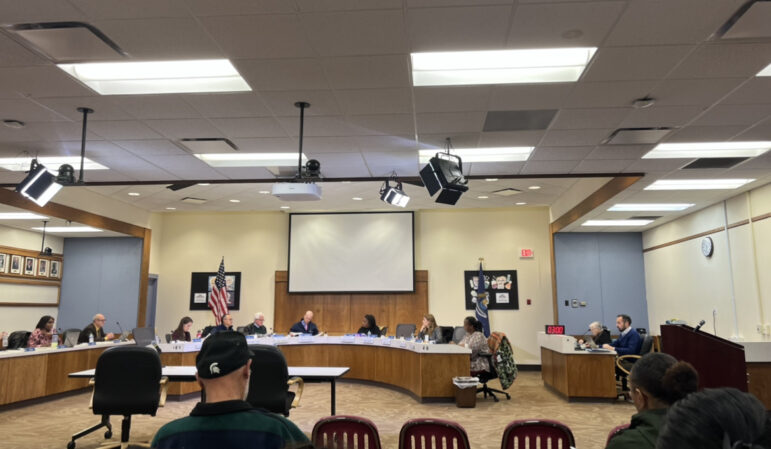The Lansing Public School District has been working through transportation issues due to bus driver shortages and although improving, there is still much work to do. “If anyone wants to be a bus driver, please let us know,” Superintendent Benjamin Shuldiner said at a recent school board meeting.
At the beginning of each board meeting, Shuldiner lists the amount of gas cards, Capital Area Transportation Authority passes and Dean Transportation sign ups as well as the number of people on the waitlist. This October meeting was no different.
As of Oct. 19, Lansing school district has given out 2,619 gas cards, 855 CATA bus passes and 3,250 students are routed on buses provided by Dean Transportation. However, the district still has 49 requests for gas cards, 56 requests for CATA passes and 433 requests for a bus route.
“The reason why I do this is to remind ourselves that we have a transportation problem… I will stop doing this once we don’t have requests and waitlists for buses,” Shuldiner said. “If we can’t get the children to school, then what are we doing?”
The district has been providing these gas cards and CATA bus passes since the 2021-2022 school year. The gas cards incentivised families to drive their own vehicle and instead of high school students taking the school bus to school, they would now be taking public transportation.

Robert Kolt, spokesperson for the Lansing School District, explained that the main issue the district is having is with bus drivers.
“The main issue is that Dean Transportation, the district’s longtime vendor and bus service provider, has struggled to recruit and retain enough bus drivers and buses to meet all the district’s transportation needs,” Kolt said.
While the district has been struggling, there are benefits of providing other options. By providing more incentives and modes of transportation for families of students, not only does attendance increase, but the amount of freedom the students can have is heightened.
Kolt said, “Flexible CATA service and gas cards have enhanced student engagement and participation in sports and many after school activities.”
Robert Hovenkamp, an analyst for the state of Michigan, said that he admires the work of the Lansing school district, and hopes that other districts will follow in their footsteps.
“The CATA cards have resulted in high school students having more freedom and mobility to get from place to place in Lansing. The gas cards have alleviated the expense of transportion to many families.”
The bottom line is that the district still has a long way to go. Shuldiner expresses how although they are making progress, they still need to keep pushing forward. His hope is that they can reach 90% attendance by 2025, and transportation is the first stepping stone to this goal.
“If you are struggling with transportation, do not do it in silence, please let us know,” he said to the families listening.